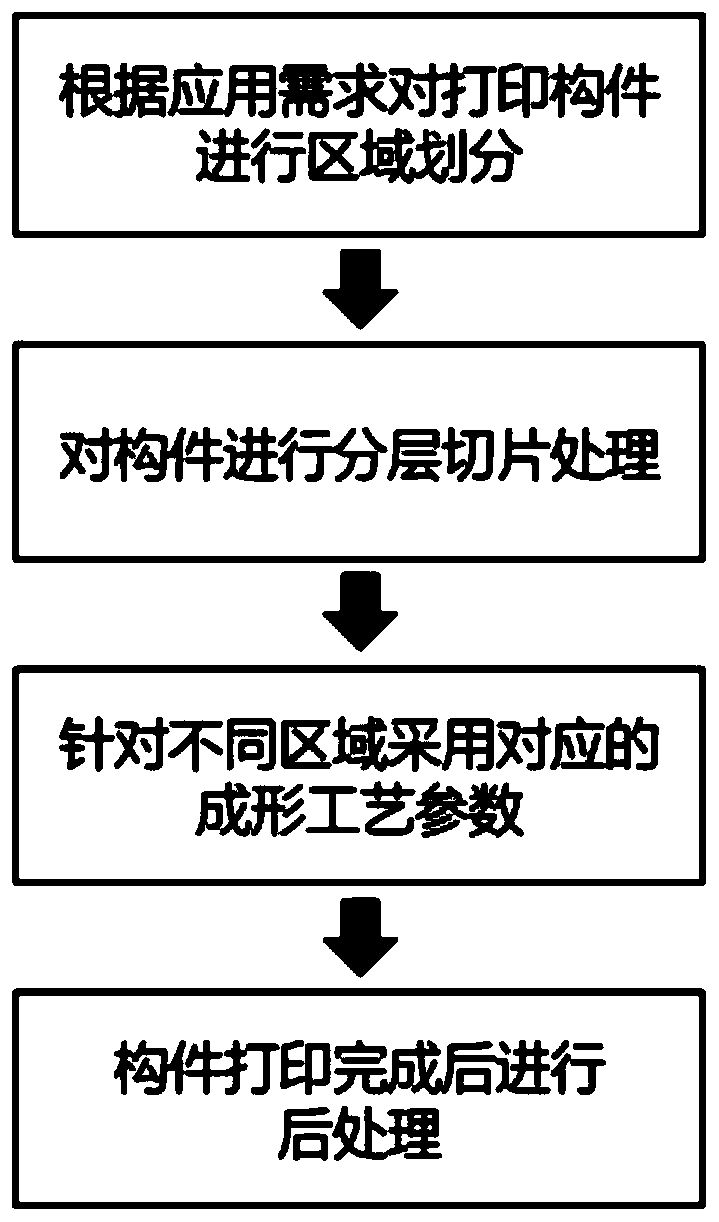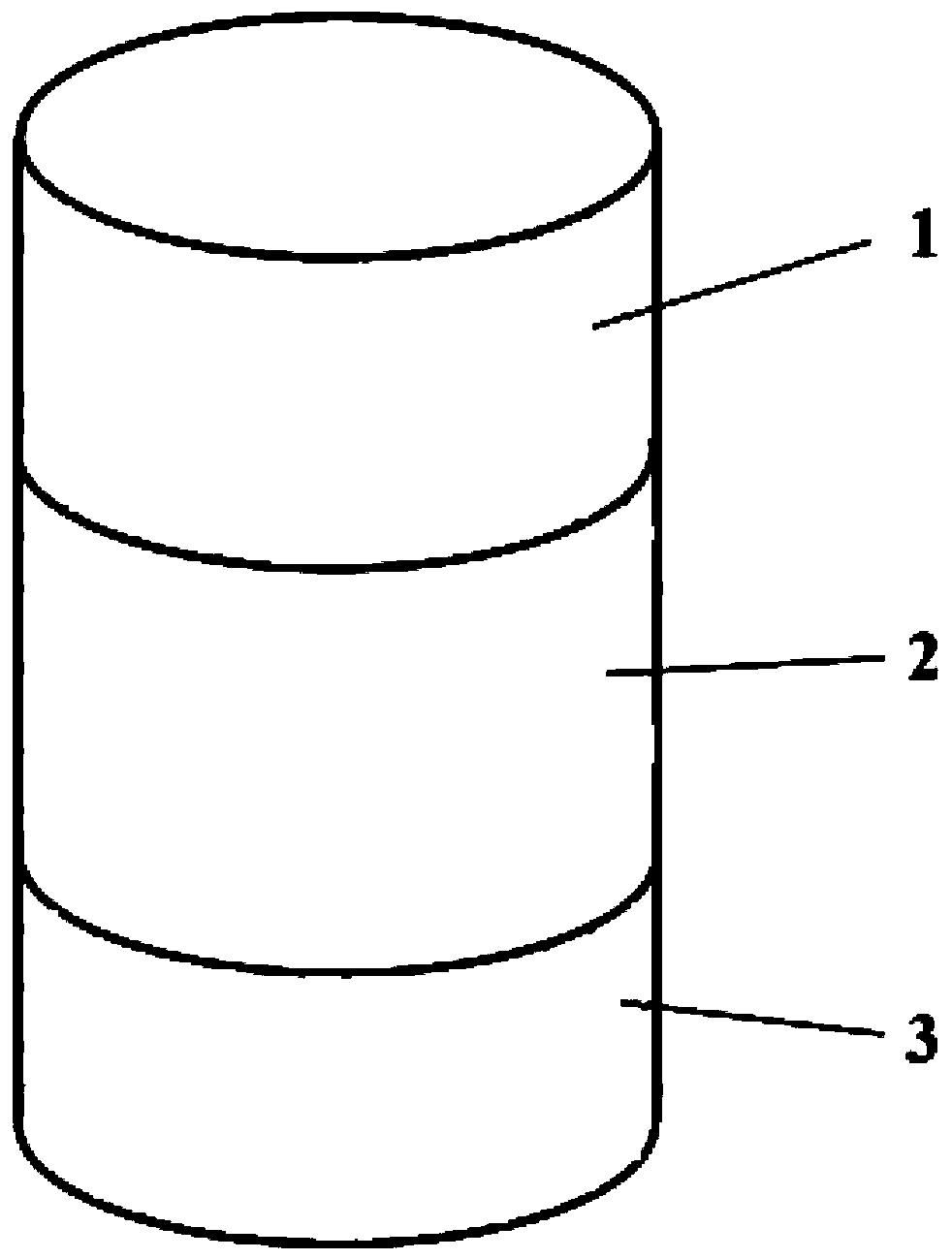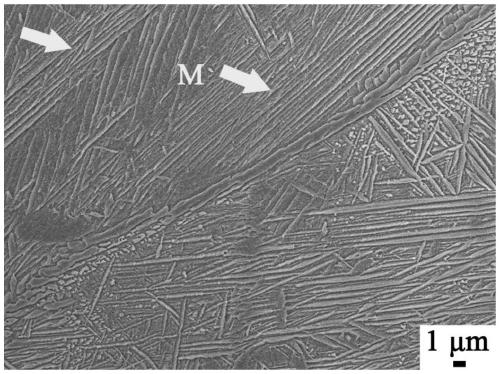4D printing method and product of functionally graded copper-based shape memory alloy smart components
A technology of memory alloy and functional gradient, which is applied in the 4D printing method and product field of functionally gradient copper-based shape memory alloy intelligent components, can solve the problems of difficult to achieve precise control of local positions, cumbersome operation steps, and restrictions on the complexity of parts, and achieve The effect of smooth surface, convenient preparation process and strong adaptability
- Summary
- Abstract
- Description
- Claims
- Application Information
AI Technical Summary
Problems solved by technology
Method used
Image
Examples
Embodiment 1
[0043] 1) Using 3D modeling software to design such as figure 2 The three-dimensional model of the copper-based shape memory alloy intelligent component with functional gradient shown is divided into regions according to the application requirements of each part of the component. figure 2 Among them, 1 is the large deformation recovery area, 2 is the small deformation recovery area, and 3 is the bearing area. The length of the large deformation recovery area 1 is 40% of the overall length of the intelligent component, the length of the small deformation recovery area 2 is 30% of the overall length of the intelligent component, and the length of the bearing area 3 is 30% of the overall length of the intelligent component.
[0044] 2) Convert the 3D model into STL file format, use the computer to identify different areas, use slicing software to slice each area in the computer, and input different forming process parameters in the SLM forming equipment according to the require...
Embodiment 2
[0050] 1) Using 3D modeling software to design such as figure 2 The shown three-dimensional model of a copper-based shape memory alloy smart component with functional gradients divides the components according to the required deformation and function of each part of the smart component. The length of the large deformation recovery area 1 is 30% of the overall length of the intelligent component, the length of the small deformation recovery area 2 is 50% of the overall length of the intelligent component, and the length of the bearing area 3 is 20% of the overall length of the intelligent component.
[0051] 2) Convert the 3D model into STL file format, use the computer to identify different areas, use slicing software to slice each area in the computer, and input different forming process parameters in the SLM forming equipment according to the requirements of different areas .
[0052] 3) The dried Cu-32Zn-6Al powder is fed into the powder feeding device of the SLM forming ...
Embodiment 3
[0057] 1) Using 3D modeling software to design such as figure 2 The three-dimensional model of the copper-based shape memory alloy intelligent component with functional gradient shown is divided into regions according to the application requirements of each part of the component. The length of the large deformation recovery area 1 is 50% of the overall length of the intelligent component, the length of the small deformation recovery area 2 is 20% of the overall length of the intelligent component, and the length of the bearing area 3 is 30% of the overall length of the intelligent component.
[0058]2) Convert the 3D model into STL file format, use the computer to identify different areas, use slicing software to slice each area in the computer, and input different forming process parameters in the SLM forming equipment according to the requirements of different areas .
[0059] 3) The dried Cu-34Zn-5Al powder is fed into the powder feeding device of the SLM forming equipmen...
PUM
| Property | Measurement | Unit |
|---|---|---|
| particle diameter | aaaaa | aaaaa |
| thickness | aaaaa | aaaaa |
Abstract
Description
Claims
Application Information
 Login to View More
Login to View More - R&D
- Intellectual Property
- Life Sciences
- Materials
- Tech Scout
- Unparalleled Data Quality
- Higher Quality Content
- 60% Fewer Hallucinations
Browse by: Latest US Patents, China's latest patents, Technical Efficacy Thesaurus, Application Domain, Technology Topic, Popular Technical Reports.
© 2025 PatSnap. All rights reserved.Legal|Privacy policy|Modern Slavery Act Transparency Statement|Sitemap|About US| Contact US: help@patsnap.com



